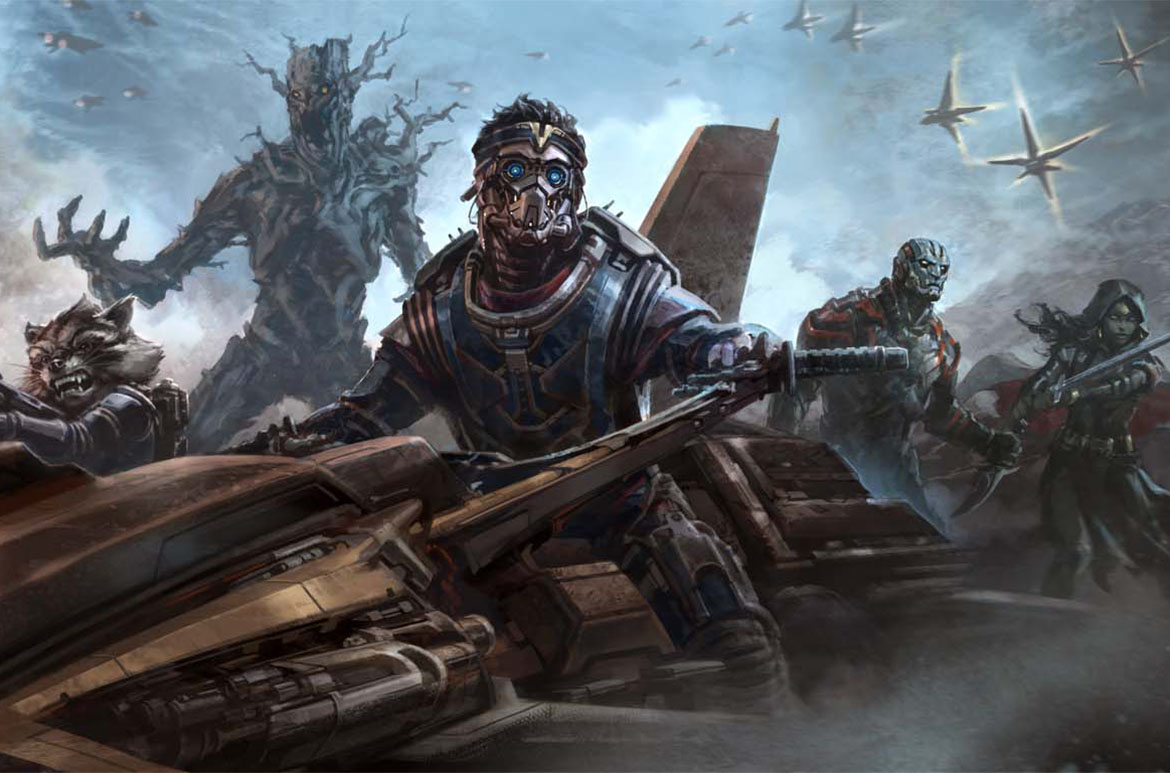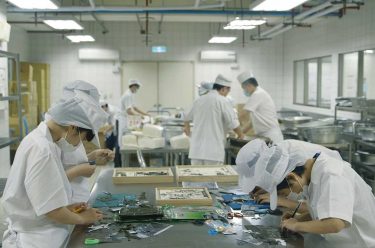Andy Park is currently Visual Development Supervisor at Marvel Studios. Together with serving as a concept artist (designing the characters and illustrating keyframe story moments), he also leads his department and a team of artists working on several films, including: Guardians of the Galaxy Vol. 2 2017, Thor: Ragnarok 2017 and Ant-Man and the Wasp 2018.
He has worked on every Marvel Studios film since Captain America: The First Avenger 2011. Previously, he was a leading concept artist on the God of War video game franchise. Park started his career as a comic book artist, illustrating top-selling comic books, such as Tomb Raider (Top Cow Productions) and Uncanny X-Men.
Amanda Slack-Smith, exhibition curator ‘Marvel: Creating the Cinematic Universe’ speaks with Park about the reality of achieving his adolescent dream of being a comic book artist and expanding his career into Marvel’s Cinematic Universe. You can view his work in the GOMA exhibition until Sunday 3 September 2017.
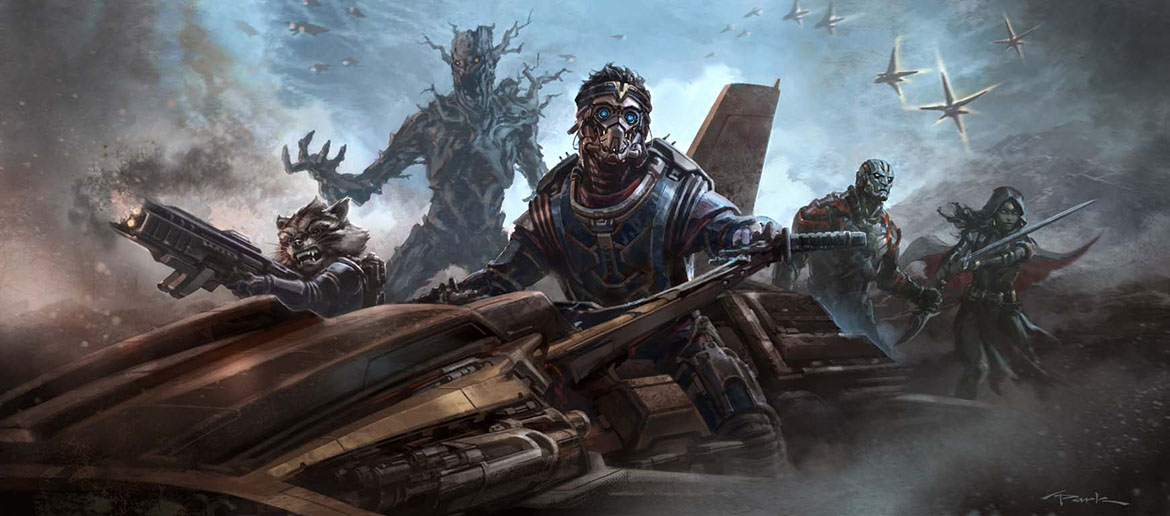
You originally began your career as a comic book artist, what inspired you to move into computer games, television and film?
I achieved my adolescent dream of being a comic book artist back in the 90’s working for Rob Liefeld’s Extreme Studios (Image Comics) and also did some Uncanny X-Men issues for Marvel Comics. I soon found that the artist inside of me yearned to get a formal art education. Up to that point I was a self-taught artist who knew how to draw with a pencil. But I wanted to learn how to paint, how to use other mediums, to explore the artistic possibilities. I didn’t want to “have” to draw comic books b/c that was all I knew how to do. I knew there were more options out there and I wanted to find out what they were. And a big part of that was growing myself as an artist. So I went to Art Center College of Design in Pasadena, California as an Illustration major. I did return to comics to work on a new Tomb Raider series for Top Cow Productions (Image Comics), but I soon decided that I wanted to expand my career outside of comic books. I loved what I was seeing in the concept art field. It was relatively a new field mainly due to the growth of the digital mediums such as Photoshop and Painter. I loved to paint and that was a career I could do that as well as design really cool character, creature, and environments. So I made the move to become a concept artist. I landed my first job at Sony Santa Monica to work on the God of War video game franchise. And after 5 years there I got hired by Marvel Studios, specifically by Ryan Meinerding and Charlie Wen, to work on their films. The rest is, as they say, history.
Can you tell us about your role as Visual Development Supervisor at Marvel Studios? What does this entail?
I became Marvel Studios’ Visual Development Supervisor about 2 ½ years ago. Between myself and Ryan Meinerding, Head of Visual Development, we split the responsibilities of leading our films. I lead the team on Guardians of the Galaxy Vol. 2 and am currently leading the team on Thor: Ragnarok, Ant-Man and the Wasp, and Captain Marvel. As Supervisor I interact directly with the director, executives, and the other heads of departments such as the Costume Designer, Production Designer, and Visual Effects Supervisor. I then art direct a team of concept artists who design the characters that you see in these films. We also illustrate keyframes, which are key story moments that help inform the look and feel for our films.
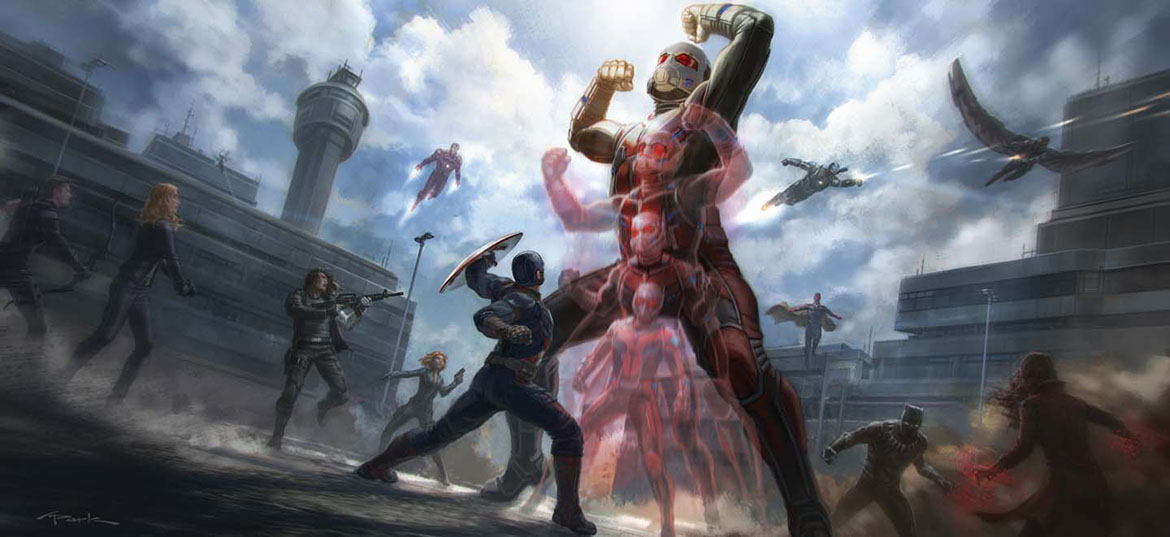
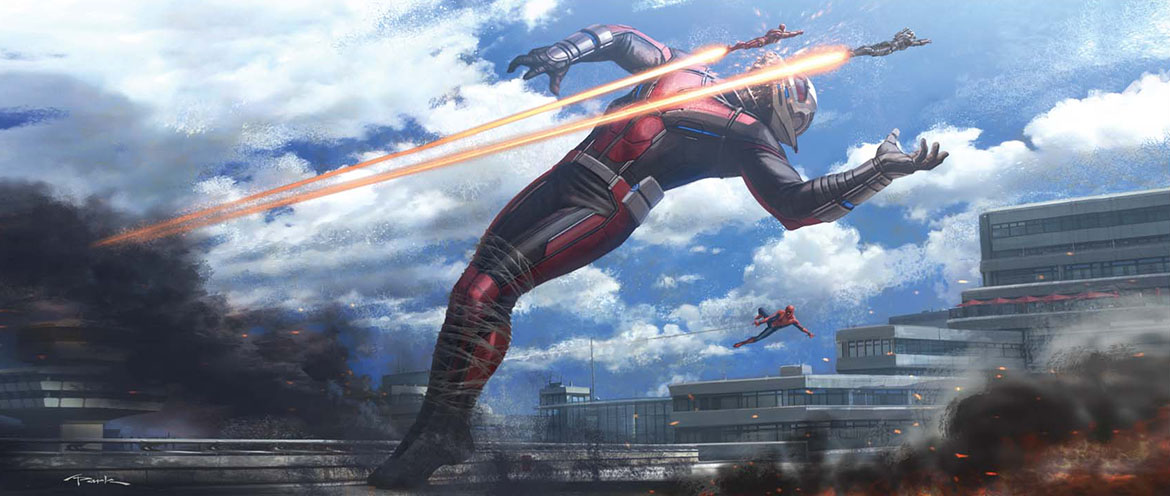
Can you give a brief overview of the research and development process you undertake from initial drawings to final design?
Our department starts developing ideas both conceptually and visually at the very beginning of each of our films. Depending on the film, we might have a brief conversation with the executives or the director. But more often than not we begin designing characters that are known to be in the film even if the story is not fully fleshed out yet. This makes sense b/c very often characters we work on already exist in the comic books. So at least we have that as a starting point. From there we will conceptualize how to make that translation from the page to live action, and of course, considering what they’re doing in our story. We do a lot of research to fully wrap our heads around who this character could be, how he/she could look like, why he/she exists, and what their purpose in the story is. All of this will dictate how we design any given character.
From there we will have a lot of back and forth (meetings) between myself, the director/s, the executives, and the other heads of departments showing our ideas and concepts. These visual ideas we create will spur on conversations, thoughts, and further ideas until we ultimately get a consensus on a visual direction. It’s very collaborative and it’s a lot of work to get any given design you ultimately see on film.
Is there a process for designing props, prosthetics and other designed elements?
The process is somewhat similar to designing our characters, in that it is included during the visual effects stage of the film making process. Very often we will do “paint-overs” to help guide the direction of any given look of a character or scene. But mostly, it’s helping guide the look of our characters. It’s a team process.
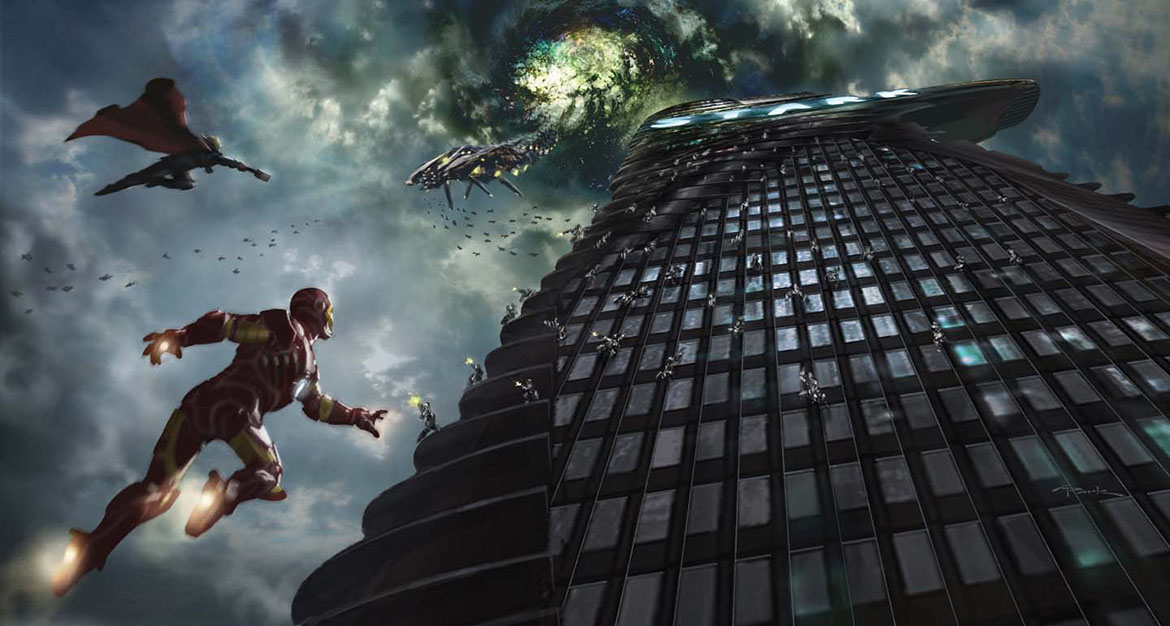
You’re the lead artist for the upcoming film ‘Thor: Ragnarok’, can you tell us a little about how you approached this particular film?
I loved leading our team on Thor: Ragnarok. It was Marvel Studios’ 3rd take on the mighty Avenger. And this is definitely not more of the same. It’s a fresh new take on the hero we’ve gotten to know through the years. Bringing in Taika Waititi was the best decision they could have made. His sensibilities have definitely infused a reinvigorated creativity to this franchise. It’s a querky new direction that owes so much to the visuals of Jack Kirby. In the past Thor films we were very concerned with grounding Thor and making him “believable.” After 15 films the Marvel Cinematic Universe has explored so many ideas and it seemed like the perfect time to embrace the cosmic visuals Jack Kirby brought into his comics decades ago.
For me personally, I loved concept designing Hela. I love her look from the comic book and I wanted to bring as much of that as possible. Of course her headdress is the most prominent aspect to her look and I love that Taika and Marvel Studios embraced that look. It’s easy to make things “realistic,” but to make something that looks great in the comic book but not practical (or seemingly impossible) in real life is no easy task. But we accepted the challenge. It was known pretty early on that to accomplish this would be a mix between a practically made costume and visual effects. Mayes Rubeo (Costume Designer) and her team made an amazing costume and Jake Morrison (Visual Effects Supervisor) and his team made this character come alive. And to have Cate Blanchett play this pivotal character was definitely a dream. Who could ask for anything more?
When working with such strong archetypes are there particular ideas or approaches you take to create the range of characters and dynamic story sequences?
Everything starts with the source material. So we always do research on the various looks each of the characters have had throughout their comic book history. From there we will do designs that range from really faithful to really pushed ideas. You need to see the range to get a sense of where to land. As you can see throughout our films, some designs look more like the comic book than others. They all have a look and feel from the comic but how much you deviate is dependent on so many factors, from the story to the people making the decision.
What is the different between concept art, production concept art and keyframe artworks? What sorts of timelines are involved in creating each form?
Our job is mainly to: 1) create concept art for the characters, and 2) to illustrate keyframes, which are key story moments. Concept art and production concept art are the same thing. It’s designing characters whether it be an actor in a costume, an actor w/prosthetics on his face and/or body, or a visual effects character or creature. We illustrate keyframes to help everyone visualize what a specific scene could look like. It’s very much like what storyboards do except in this case, our illustrations also spell out the mood, colors, texture, and the overall feel of any given moment. These take about a week to illustrate. Character designs usually take a day or two.
In addition to your artwork being featured throughout the exhibition, you’ve also created new work showcasing the characters of ‘Thor: Ragnarok’ for the hardcover exhibition publication and limited edition collected. Can you tell us a bit more about this drawing?
I was honoured to do the illustration for the hardcover exhibition publication. I wanted to come up with a poster type of image with a lot of mood. This movie is called Thor: Ragnarok and it’s that end of days type of feeling I wanted to evoke with this painting with Hela’s shadow looming over our characters. She’s coming and it will change the MCU forever.
This painting took me about a week and a half to illustrate. I wanted to show Thor as we’ve never seen him before, with a new helmet, 2 swords, and more importantly without his hammer. This is a Thor you haven’t seen before. And just like in any good horror film it’s the unknown or unseen things that is most scary. So I wanted to evoke that feeling of pending doom in the form of Hela. I had a blast doing this illustration!
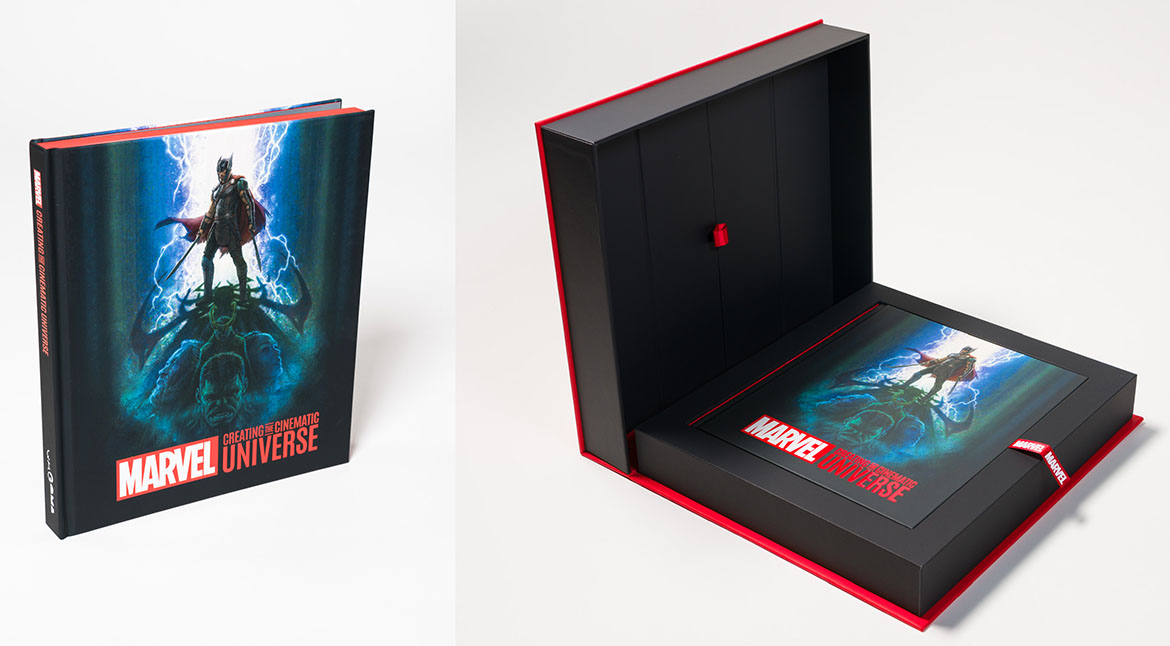
Looking back on your work at Marvel Studios, which has included every film since ‘Captain America: The First Avenger’ in 2011, do you have any thought about how your work may have developed or changed over this time?
I’ve worked full-time for Marvel Studios for the past 7 ½ years now. It’s definitely been a dream job, especially given my comic book roots. I’ve grown so much working alongside artists that I respect and admire such as Ryan Meinerding, Charlie Wen, Rodney Fuentebella, Jackson Sze, Anthony Francisco, and the many freelance artists we’ve employed through the years. Just by working alongside these amazing artists I feel like I’ve grown more than at any other point in my artistic career. Everyone here has their own strengths and it’s that teamwork that, I think, makes this department work. It’s a model that Kevin Feige, Louis D’Esposito, and Victoria Alonso decided to create 7 ½ years ago and I have so much respect for them to have this type of vision. It’s not a typical Hollywood model but I think they’ve proven that it can definitely work. I look forward to the next 7 ½ years!
DELVE DEEPER INTO THE MARVEL CINEMATIC UNIVERSE and WATCH OUR BEHIND-THE-SCENES VIDEOS
Go behind the scenes of ‘Marvel: Creating the Cinematic Universe’ to experience more than 500 unique objects from your favourite films, never-before-seen iconic objects which offer a glimpse into the work of production designers, storyboarding and pre‑visualisation artists, costume and prop designers, and visual effects artists alongside the original comic books which introduced the characters and influenced the films.
TICKETS CINEMA | EXHIBITION | UP LATE / BUY THE PUBLICATION
Purchase tickets for ‘Marvel: Creating the Cinematic Universe‘ in advance or at the ticket desk 10.00am-4.00pm daily. ‘Marvel’ film screenings and ‘Marvel’ Up Late are separate ticketed events.
Amanda Slack-Smith is exhibition curator ‘Marvel: Creating the Cinematic Universe’ and Associate Curator, Australian Cinémathèque, QAGOMA
Feature banner (detail): Andy Park / Guardians of the Galaxy team / Keyframe for Guardians of the Galaxy 2014 / © 2017 MARVEL
